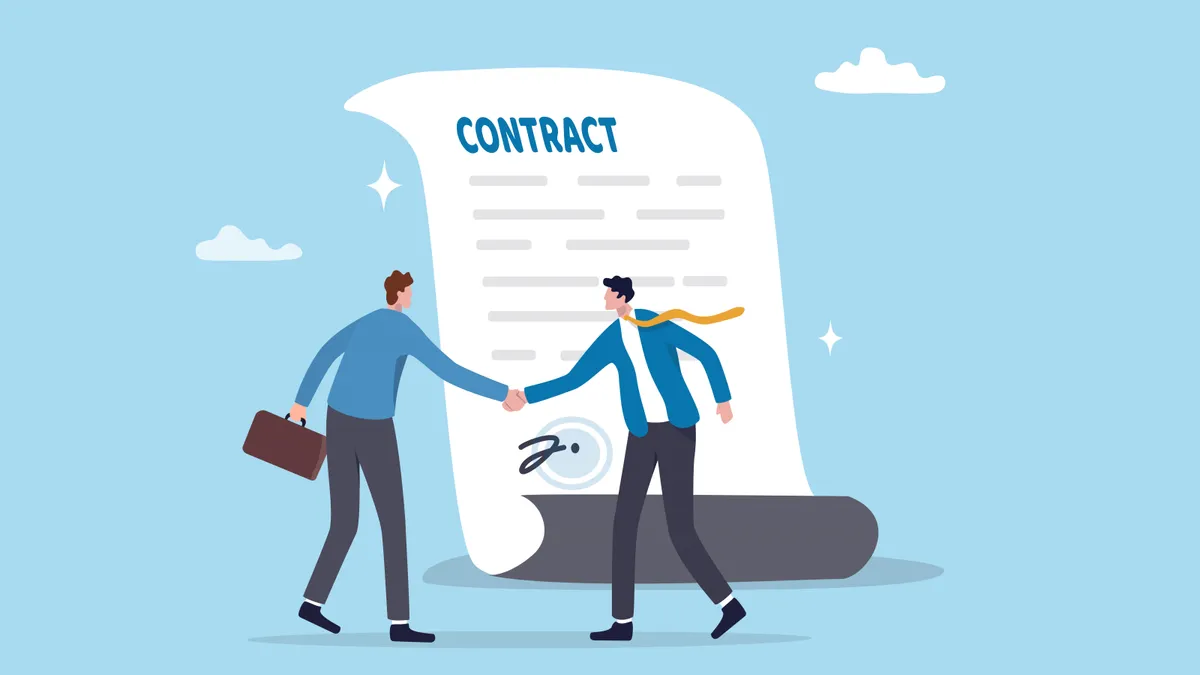Start on the buy side to implement a contract lifecycle management (CLM) platform because procurement contracts are the easiest to routinize and your organization tends to have more control over the terms, Mike Russell, head of global legal operations for Expedia Group, said in a webcast.
Russell joined the online travel company three years ago and spent the first 18 months getting a handle on the company’s processes before implementing the CLM.
“It was clear the low hanging fruit was on U.S.-based, English [language] buy-side contracts,” he said in the webcast, hosted by legal operations consulting company Elevate. “We’re procuring all kinds of goods or services across the enterprise, and in technology, there are a lot of contracts for services and licensing and the like, along with facilities and related things. So, we were able to boil that down to not a few, but about 18 workflows for different types of contracts.”
Getting many of the company’s buy-side contracts to fit into 18 templates wasn’t easy, he said. “It’s an awful lot to bite off.”
But after about nine months, his team was able to work with the platform vendor and an implementation consultant to unwind all of the playbooks and attorney and procurement knowledge that goes into the contracts and develop the templates and workflows.
The process has been functional for only four months so it’s too soon to quantify the impact it’s had. But on a qualitative basis, Russell said, he’s been getting good feedback from across the enterprise.
“We can say people have enjoyed adopting the platform,” he said. “They like interfacing with it and doing everything within the platform.”
People who’ve used the platform are the ones who are helping to push its wider use, he said.
“If anything, it’s been that cheerleader effect, where one person tells another person who tells another person,” Russell said. “When they see something come through an email, [they’ll ask], ‘Why aren’t you doing this in the CLM? Did you hear about the new CLM?’ So, we’ve seen word spreading like wildfire, getting inquiries from other teams: ‘I heard about this new platform; how soon can we use it?’”
There have been two other benefits of adopting the platform, Russell said.
First, it’s given the company a faster process for getting non-disclosure agreements signed. “It was reasonably self-service before, but we changed the way we do it,” he said.
Among other things, it now has pre-signing and clickwrap capabilities. “So, there’s zero routing of anything, even e-signatures,” he said. With clickwrap, signers log on to the platform to click a button to make their approval official, eliminating the need for routing.
Second, a disclosure form that used to accompany each contract to meet Sarbanes-Oxley (SOX) reporting requirements is now taken care of as part of the platform workflow, eliminating the need for that form to be routed for signature.
“One of my favorite meetings before we went live was with the head of internal audit,” Russell said. “We communicated how we were eliminating a formal manual form that used to have to accompany every single deal that went around for review and approval and that was now replaced by the platform. So, for him to be able to say we don’t need that any more for SOX controls was music to everybody’s ears.”
Sell-side contracts
Russell’s team is now starting to consolidate sell-side contracts, a more complex process because of the greater variations of contracts the company uses for what it sells.
But the process has been made easier by each business unit already having a person embedded in the legal department. That’s given the implementing team an inside view of the details that go into building the contractual templates and workflows.
Even so, the team is looking at just a handful of templates to put on the platform to start rather than the 18 they created on the buy side.
“By understanding the complexities, volumes and uniqueness of deals of what we’re working with, we were able to choose our first supply partner and we’re going live with them before the end of the year,” he said. “We were able to take something that had three levels of complexity and take the lowest complexity one, which was just a few templates with similar but different workflows, and we’re [getting] them grouped into a tool.”
More people need to be involved on the sell side, too, so that’s added to the complexity, he said.
“It’s been an interesting learning experience trying to create this matrix of people that need to be involved,” he said. “We’ve looped in a legal resource, the data privacy resource and whatever additional review might be required.”



















